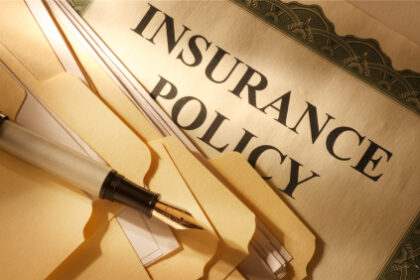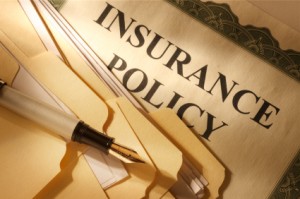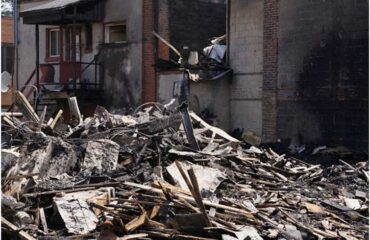
 In our recent discussions with homeowners, it has been brought to our attention that homeowners are under insured. People who purchase a home must have insurance. If you do not want to purchase insurance, then the bank will force a policy on your home. You may think that this is easier, but the bank will get the absolute cheapest policy on your home and if a storm or natural disaster is to hit, you will not be covered.
In our recent discussions with homeowners, it has been brought to our attention that homeowners are under insured. People who purchase a home must have insurance. If you do not want to purchase insurance, then the bank will force a policy on your home. You may think that this is easier, but the bank will get the absolute cheapest policy on your home and if a storm or natural disaster is to hit, you will not be covered.
The first time people actually read their policy is generally after a loss. They discover what is and what isn’t covered. In addition to windstorm damage, for which coverage varies according to location, and flood insurance, which is purchased separately and is required by most mortgage lenders for homes in flood-prone areas, homeowner’s insurance cover many situations that can affect you.
Damage to the dwelling and the contents could be the biggest unexpected disaster awaiting a homeowner who has less coverage then needed. Most policies provide a stated maximum amount of coverage for the dwelling and another amount for contents.
For Dwelling Coverage, it is based on replacement cost, which means that in the event of a total loss to your residence, the policy will only provide reimbursement, up to the policy limit, to replace the structure. A homeowner should buy enough insurance to completely rebuild their home. This is known as replacement cost value. (This amount may not be the home’s actual market value or what the homeowner originally paid for the home.)
In order to figure out how much insurance to purchase for y our home, an accurate appraisal of the home for the replacement cost should be made. Most insurers recommend or even require that a homeowner insure the dwelling for 100% of its full replacement value. Depending on the type of home that you have, some features may not be replaceable in reference to workmanship, materials or practical costs. It is important to discuss these items with the insurer and/or agent.
Coverage for personal property is different. For personal property, policies provide actual cash value coverage for contents which includes depreciation, or full value contents without depreciation. Actual cash value means that if a power surge blows out a 7-year-old television set, the homeowner should know what to expect. Unlike full value contents coverage, which would basically provide you with a brand new television, actual cash value only permits the insurance company to calculate the useful life of the item and then depreciate the item to its present value. A depreciated television from 7 years ago would be insured for only a fraction of what it had cost originally. Homeowners may want to consider Replacement Cost Coverage to be sure that the contents are sufficiently insured.
Homeowners should purchase additional coverage for items that would ordinarily be subject to loss limitations, in addition to making sure that you are covered for replacement rather than actual cash value
In addition to making sure that contents are covered for replacement cost rather than actual cash value, homeowners should purchase additional coverage for items that would ordinarily be subject to loss limitations. Practically all policies cover contents loss up to the policy limit for items that include furniture, clothing, toys, accessories such as lamps and other items which are used for decor. Precise limitations are set in the policy for high-cost items such as jewelry, fine art, furs, electronics, collectibles, oriental rugs and antiques. If a thief comes in and steals a two-carat engagement ring, it will not be covered well enough without what is commonly known as a personal property rider to cover specific, costly items.
Liability Coverage
Liability insurance is very important to a homeowner’s coverage because it helps protect the owner and the family from financial disaster if someone files a claim against the homeowner’s policy, sues the homeowner or if the courts hold the homeowner legally responsible for someone else’s injury or property damage. The standard liability limit for most policies is $100,000, but many people believe that additional protection is needed , especially if the homeowner has sizable assets.
For a small increase in premium, an additional $300,000 to $500,000 may be obtained. Liability coverage protects in three ways: Personal liability, damage to the property of others, and medical expenses for injury to others.
Another way to protect one’s assets is to consider an Umbrella Policy which usually adds $1 million (or possibly more) in excess liability coverage to the homeowner’s property and automobile insurance policies. It also covers claims excluded from most basic policies such as libel, slander, defamation and mental anguish.
For example, most policies provide liability coverage that covers not only accidents that occur on the insured property but accidents that occur elsewhere. If the family dog bites a neighbor in front of another neighbor’s house, for example, the dog owner’s homeowner’s policy will usually compensate the neighbor for injuries and necessary medical expenses.
Theft Off Premises
Most policies automatically insure against the loss of personal property even if that property is not on the insured premises when it is lost. If one goes to the airport with several suitcases and they are stolen, this is probably covered. Talk with your agent and/or your insurance company for details.
Additional Living Expenses
Another automatic benefit of which many homeowners are unaware is coverage for living expenses if the covered premises is damaged to the point of being uninhabitable. Not only should the policy pay for the cost to repair the damage to the dwelling, but it should also reimburse the homeowner for the additional expenses of living elsewhere while the repairs are being made.
What Should A Homeowner Do To Be Prepared?
How does someone find out what is and what is not covered? Read the policy carefully. It’s not likely to be fun reading, but the good news is that if one reads and understands his or her policy before it is needed, this knowledge may save unexpected financial losses should a problem occur. It is always best to talk with one’s insurance agent or the company that issued the policy for details.
Understanding your homeowners insurance policy is best handled before a claim is made. In the case of the contents, an inventory of items room by room is important to have with information such as the date purchased, serial number, the original cost of each item and a brief description. Video tape or still photos is very helpful along with the inventory. These items should be stored in a safe place such as a safety deposit box in a bank or savings and loan institution and not in the home because if the home is destroyed, the chances are the inventory and related photos or tape may also be destroyed.



